Best Sleeping Bag for The Money- Reviews and Consumer Buying Guide
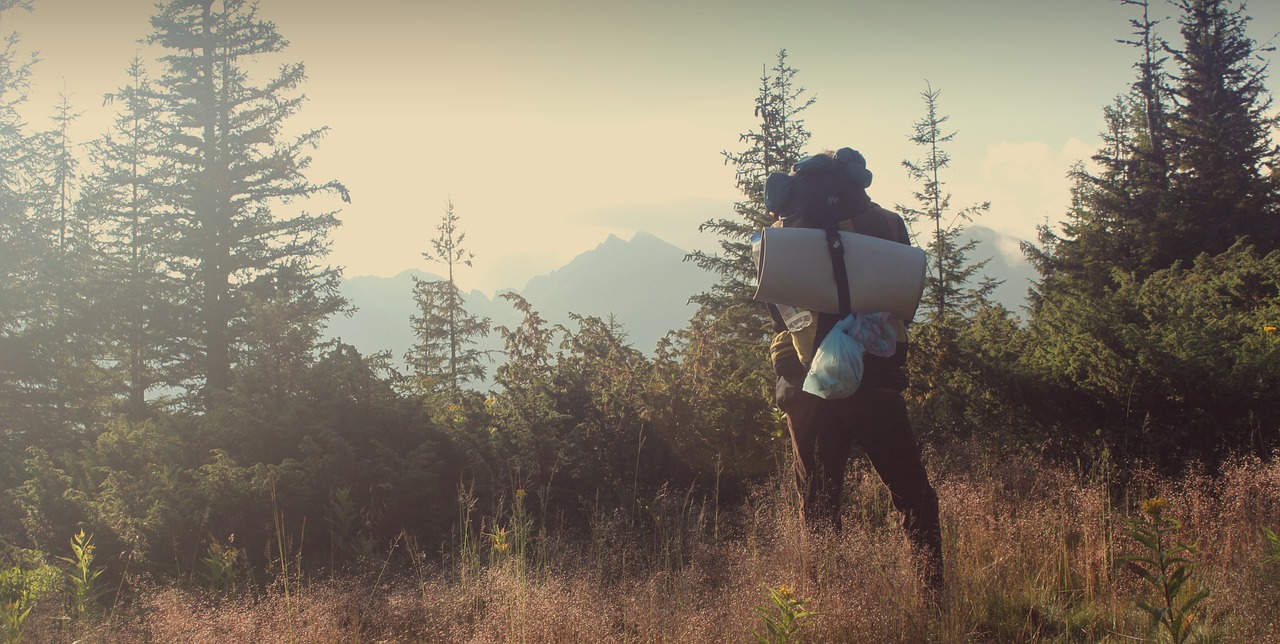
For anybody planning to spend the night outdoors camping, a sleeping bag is the first and most important item that needs to be packed in preparation for the trip.
In most places in North America, the nights can get fairly chilly even in the summertime so a sleeping bag is the only thing standing between a good night’s sleep and a night spent awake shivering from the cold leading to hypothermia.
Camping enthusiasts who spend many nights outdoors certainly understand and appreciate a good quality sleeping bag.
The sleeping bag (initially called the “Euklisia Rug or Blanket”) was first invented and patented by Pryce Jones in the late 19th century. It was used extensively by the German and Russian armies.
During the siege of Plevna, Mr. Jones made sixty thousand of these blankets as part of a contract for the Russian Army, supplying 6000 of them per week. When Plevna fell, the order got cancelled and Jones was left with seventeen thousand blankets on his hands. He converted them by removing the air-tight pillow and filling the space with feathers, wool, cotton or straw and sold them for use by the poor as a combination of bed and blanket.
The modern sleeping bag has come a long way since the days of the Euklisia rug. Modern sleeping bags come in a variety of styles, sizes and colors.
amzn_assoc_placement = “adunit0”;
amzn_assoc_search_bar = “true”;
amzn_assoc_tracking_id = “pnch09-20”;
amzn_assoc_ad_mode = “manual”;
amzn_assoc_ad_type = “smart”;
amzn_assoc_marketplace = “amazon”;
amzn_assoc_region = “US”;
amzn_assoc_title = “Cool at Amazon :-)“;
amzn_assoc_linkid = “b4ee3c2fab903537a4154bcc8a09708f”;
amzn_assoc_asins = “B00CGQE7GE,B006IYD55Y,B071PBQY64,B016I92X60”;
What Makes for the Best Sleeping Bags For the Money?
At the heart of every sleeping bag lies the trade-off between insulation and the size & weight of the bag. It is always desirable for a sleeping bag to provide good insulation and to dry out quickly when wet. Unfortunately the better is the insulation, the larger and the heavier is the resulting sleeping bag.
Two common types of fillers used for the sleeping bag are the synthetic fill and the natural fill (e.g. down feathers). The synthetic fill is cheaper to manufacture, doesn’t absorb as much water, dries out quicker and provides better insulation when wet.
However the synthetic fill cannot be compressed as much as the natural down and is therefore larger and heavier. When the natural fill is dry, it retains the heat better than its synthetic counterpart. For this reason, modern good quality sleeping bags use a waterproof outer layer to prevent the water from soaking the filler and thus reducing its insulating qualities.
You don’t have to be an ultra light backpacking extremist to appreciate the benefits of a lighter backpack.
At the end of a long grueling day on the trail, you always look forward to the sleeping bag calling you to a peaceful night of slumber. Anyone who has spent a sleepless night out under the stars shivering until daylight will attest to the absolute importance of having the best sleeping bag for the money.
We have tested over 100 sleeping bags, and present you with the 10 that are worth every single coin you spend on them.
#1 REI Lumen Sleeping Bags
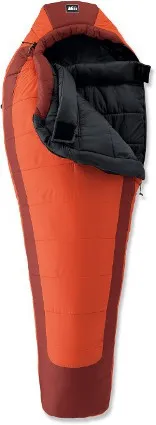
The REI Lumen is a synthetic sleeping bag available in a huge array of temperatures and sizes, including: +10°F long and regular, +25°F long, regular, youth, and +40°F long and regular sizes.
All of these sleeping bag models have an impressively cozy inside and compress to weigh next to nothing. The REI lumen sleeping bag series features a Synthetic Thermawave insulation design that allows a warm night’s sleep, even if the bag gets wet.
Each of the REI lumen sleeping bags also have a shingle construction so that insulation is distributed even throughout the bag. These bags are roomy and allow for a comfortable night’s sleep with room to move around. There are pad loops available so that you can attach your pad and not worry about losing insulation while moving around in the REI lumen sleeping bag.
The majority of the reviews for the REI Lumen sleeping bag series say that this sleeping bag is best for backpacking, is lightweight, and compresses extremely small.
Several people who have bought the long styles of the REI Lumen sleeping bag report that they had plenty of room to get comfortable and move around, even at 6 foot 5 inches.
The only complaints throughout these reviews are that the zipper would occasionally snag, however it never ripped. Every reviewer of the REI Lumen sleeping bag series said that they would certainly recommend this series to a friend.
#2 Big Agnes Grouse Sleeping Bags
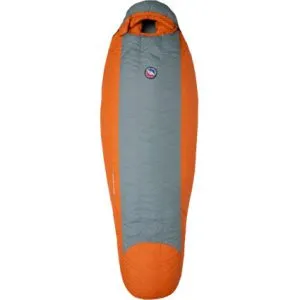
The Big Agnes Grouse Mountain is a fantastic +15°F 3-season unisex sleeping bag, providing continuous warmth because of the unique Big Agnes vertical baffles.
These vertical baffles prevent the down insulation from shifting, creating a warm and comfortable bag. The Grouse sleeping bag by Big Agnes has two models available - a regular length model and a long length model.
There is a draft wedge that insulates the bag when used with any 20 inch wide sleeping bag mummy pad. These pads are sold separately, but the Grouse has a half sleeve for a pad which has replaced any underside lining. The Grouse has a 2-way, locking zipper with a considerably large zipper so you can get in and out of your bag easily. The Big Agnes Grouse sleeping bags come with a large cotton storage bag and a nylon stuff sack.
The majority of reviewers for the Big Agnes Grouse sleeping bag love the half sleeve feature on the bottom of each bag.
Reviewers stated that this half sleeve in combination with their own 20 inch sleeping bag mat allowed them to move around as necessary and remain warm.
Most reviewers said they loved the extra room in the bag and that the Grouse sleeping bags were incredibly roomy, comfortable, and warm. One reviewer stated he used this bag while climbing Mt. Kilimanjaro and was extremely pleased with the ability to move around and stay warm in this bag. There were no complaints in any of the reviews for the Big Agnes Grouse.
Check detailed specs, price, and customer reviews
#3 Kelty Cosmic Sleeping Bags
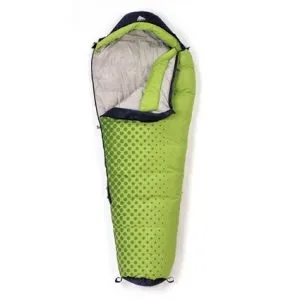
The Kelty Cosmic sleeping bag series features a 0 degree bag in regular and long length as well as a +20 bag (pictured) in short, regular, and long lengths.
All of these Kelty Cosmic bags are made of soft, high-loft 550 fill to give you a warm night’s sleep.
Kelty Cosmic sleeping bags have Slant baffle construction where the fabric of the bag is cut slanted, providing you with more insulation and comfort.
Ground level side seams also hold the draft tubes of each bag in place, preventing any cold air from getting into the bag through the zipper. The inner polyester taffeta lining of the Kelty Cosmic is comfortable against your skin and won’t irritate you as you sleep.
Each hood of the Kelty Cosmic sleeping bags have different lengths of cord to keep you warm without complicated cords digging into you. There are also hang loops on each of these sleeping bags, allowing for easy drying and storage.
The majority of our reviewers said the Kelty Cosmic sleeping bag series is great for backpacking, 3 season use, and that each bag was extremely comfortable and warm.
Many reviewers noted the fact that the Kelty Cosmic series isn’t as tight as most leading mummy bags and that there was plenty of room to move around and get comfortable inside the bag.
One reviewer said that the regular size Kelty Cosmic was a bit snug, but at 6 foot, he could still fit in it. The only complaints about this series is that these bags are not full-zip and the zipper would occasionally snag. However, reviewers that had these complaints, still gave the bag a high rating and said they would recommend it to a friend.
See detailed specs, price, and more customer reviews
#4 Marmot Pinnacle Sleeping Bags
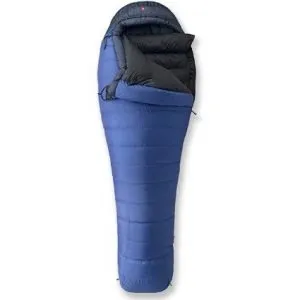
The Marmot Pinnacle is an ultralight mummy style sleeping bad with an impressive water-repellent, windproof, and downproof nylon shell.
This model is available in both a men’s (pictured) and women’s regular length and a men’s long length, perfect for anyone who struggles to find a quality sleeping bag that fits.
The baffles of the Marmot Pinnacle are made with stretch tricot enabling a long lasting strength and durability. There are ground level side seams in each Marmot Pinnacle which eliminates cold air leakage and the goose down filling can loft completely.
The head of the Marmot Pinnacle is built with a 6-baffle hood and a face muff that can be cinched down to keep you warm, but not cut off your air supply or dig into your face.
In addition, the draft collar had tubing to create a seal from any cold air and features a two-way zipper. The Marmot Pinnacle is rated at +10 degrees Fahrenheit / -12 Celsius for the men’s bag and +15 / -9 for the women’s.
The main consensus between reviewers of the Marmot Pinnacle is that the bag stayed incredible warm. The coldest temperature this bag was used in according to several reviewers was around 0 degrees Fahrenheit.
One reviewer claimed he crawled into the bag at an almost hypothermic temperature and was able to sleep well through the night and woke up feeling better.
Other reviewers claimed that the bag kept them warm in 20-30 MPH winds. It was also noted that the bag is very fluffy and bulky (in a good way) when in use
The only complaint about the Marmot Pinnacle from reviewers is that the zipper seemed to snag easily. However, the zippers never broke and most reviewers said even that one complaint wasn’t enough to sway them from a five star rating.
#5 Big Agnes Cabin Creek
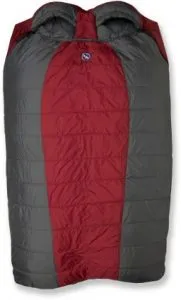
The Big Agnes Cabin Creek is an extremely spacious 15°F double sleeping bag that still has all the features of a single person sleeping bag. The synthetic insulation of this bag not only keeps you warm, but allows for the Cabin Creek double sleeping bag to easily compress into a stuff sack.
The ripstop nylon shell has been treated with a waterproof repellent so that your bag can stay dry and avoid condensation. The Big Agnes Cabin Creek nylon taffeta lining also provides a non-staining finish.
The underside lining has been taken out of the Cabin Creek bag so when used with the Cabin Creek pad (sold seperately), there is a no-draft insulation between the bag and mat. In each hood of this double bag, there is a no-draft collar so that cold air cannot sneak into the bag and a built-in pillow pocket so you can use a jacket or pillow.
Most reviewers had no complaints about the Big Agnes Cabin Creek. They said this bag is best for car camping or short backpacking trips and is a great 3 season use bag. Most reviewers of the Cabin Creek double bag claimed the bag was very spacious and stayed very warm, especially with added body heat.
One reviewer claimed that the bag was too short for him at 6”1, but there were also reviews by people who were taller (6”3), that said they had plenty of room. Ultimately, the majority of the reviews stated the Big Agnes Cabin Creek was a fantastic double bag with the same great features found in Big Agnes single bags.
See detailed specs, price, and more customer reviews
#6 REI Radiant
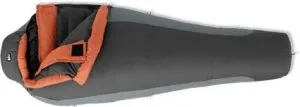
The REI Radiant sleeping bag series includes 3 bags: a men’s and women’s +20 degree bag and a 0 degree unisex bag (pictured). The REI Radiant is a down 3 season bag that’s quite versatile and reasonably priced.
These bags use 650 power fill down and feature a relaxed fit, so there will be some room to move around. REI’s baffle design keeps the down from shifting and prevents cold spots.
The nylon shell has been treated with a water repellent to repel moisture if you need to use this bag on the ground. Other features include a contoured hood, insulated full-face muffler and full-length draft tube. The REI Radiant 20 for men is available in regular, long and extra wide.
The women’s version is available in regular and long and the REI Radiant 0 is available in short, regular and long.
The REI Radiant is very popular with backpackers and receives very positive reviews. Reviewers all agreed that this bag is very comfortable and also lightweight.
One reviewer used the +20 bag right around that temperature and said he was warm all night. Another reviewer used the +20 bag at +15 with minimal layers and also said he was quite warm.
Another reviewer said he was having a problem with leaking down but several other reviewers all said they have had no leak issues besides a stray feather here or there. Another reviewer reported a slight zipper snag but we also only heard this complaint once.
#7 Mountain Hardwear Lamina
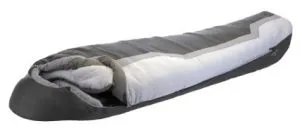
The Mountain Hardwear Lamina series of sleeping bags is available in a wide variety of choices ranging from -30 F to +45 F temperature ratings. They also offers both regular and long cuts as well as a women’s cut, a Megalamina version (two person), Extralamina (extra width), Ultralamina (ultra light weight).
Due to their construction, all bags in the Lamina series are great for damp, cool conditions. The patented construction on these bags eliminates cold spots and enhances loft. All the bags feature a Thermic micro synthetic fill. All the bags also have welded seams, instead of sewn, to increase durability and waterproofness. It also helps to increase loft.
Campers and backpackers love the Lamina line of bags. One of the best things about the line is with 34 total models, and multiple sizes within those, it’s easy to find a bag that fits your exact size and temperature requirements.
Reviewers noted that the bags are warm and lightweight yet pack small. The biggest complaint we keep hearing is that the zipper snags easily, we probably heard this from 50% to 60% of our reviewers. The Lamina 30 is pictured above.
See ratings and price on Amazon
#8 North Face Cat’s Meow Sleeping Bag
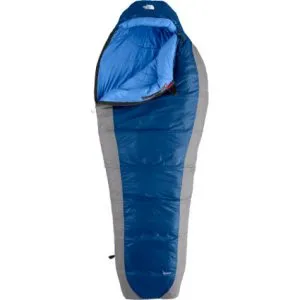
The North Face Cat’s Meow is a 3 season sleeping bag with a 20 degree Fahrenheit (-7 degree Celsius) rating. This bag is very lightweight, just over 2.5 pounds. It is also very compressible, which makes it great for backpackers and hikers.
The Cat’s Meow uses Climaguard synthetic insulation and a Firestorm water resistant top shell. The bag has an insulated heat trap baffle in the chest area to keep you warm on those cool mornings.
A shoulder level zip pocket gives you easy access to a flashlight or glasses, which is a nice feature. A snag free zipper and glow in the dark zipper pulls make getting in and out a breeze. The Cat’s Meow comes in both a men’s (pictured) and women’s model and in both a regular and long in both of those models.
This sleeping bag gets very positive reviews. Backpackers note that the bag is comfortable, warm, lightweight and packs down nicely.
The Boy Scouts of America love this sleeping bag and many troops encourage their members to purchase this model. Several reviewers noted owning this model for 5+ years and it is still holding up well. One hiker noted using this bag with no sleeping pad in below freezing temperatures without getting cold. One negative we heard a few times about this bag is that the zipper snags easily. Some reviewers also said they had trouble getting the bag pack into it’s compression sack.
#9 Marmot Plasma
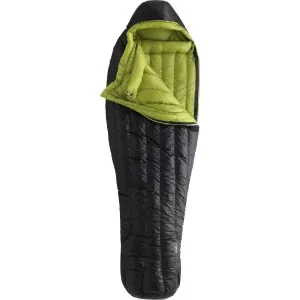
Introduced in 2011, the Marmot Plasma series is already making a wave in the outdoor scene. There are 2 models, the Plasma 15 and the Plasma 30 which have respective temperature ratings of 15 degrees Fahrenheit (-9 Celsius) and 30 degrees Fahrenheit (-1 Celsius).
Both bags weigh less than 2 pounds! Both bags feature 900+ fill power goose down insulation and a Pertex Quantum outer fabric which is water-resistant, breathable and rugged at the same time.
The bags also feature an internal baffle system, called Insotect Flow, which keeps the down from sliding down the bag and is supposed to improve heat transfer.
The Marmot Plasma 15 has received Outdoor’s 2011 Gear of the Year Award and was featured in their Spring/Summer buyer’s guide. Other reviewers say the bag is well designed, noting that the draw cords for the hood and draft collar were easy to locate in the dark.
Two negatives of these bags are price and stuff sack volume. The plasma series is quite expensive, which may dissuade some buyers. The stuff sack volume of 9.5L for the Plasma 15 is a bit large for some. Both bags in the series come in standard (up to 6’ tall) and long (up to 6’6”) lengths.
Click here to read detailed specs, ratings, and latest price on Amazon
#10 Kelty Light Year Sleeping Bag
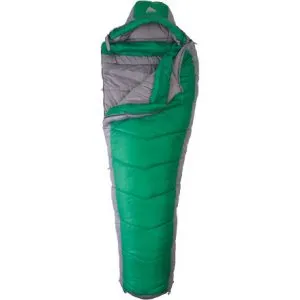
The Kelty Light Year is great series of sleeping bags because of the choices. You can pick the bag up in both down and synthetic and also in a temperature range from 0 to 40 degrees. The side zipper goes down to the hips to make entry and exit a breeze, especially for a mummy-styled sleeping bag.
An innovative toe box zipper even lets you air your tired dogs after a long day of backpacking on or off the trail. A polyester ripstop outer shell blocks wind and rain, while the polyester taffeta lining offers comfort and warmth under the stars. Coupled with a 650-down fill or Climashield synthetic material, the Light Year is great for any temperature and weather conditions.
Campers love the Light Year for fun jaunts into the wilderness and extended summer and autumn trips, especially since it’s suitable for warm nights and cold, early mornings.
Many backpackers say the toe box zipper is enough, but the relatively low price is what truly gives this great sleeping bag the value it is renowned for in the camping world. Backed by the Kelty lifetime warranty, this sleeping bag is durable enough for many seasons of backpacking and camping from the Grand Canyon to Alaska and beyond.
See the latest price on Amazon
[su_divider]
Take Care of Your Best Sleeping Bag
By taking great care of your own bag, you may not need certainly to replace it for a decade or more. Follow these suggestions to make your bag last:
-
Dry your bag instantly after every use
-
If washing it, follow the directions for your own bag. If you misplace them, clean your bag by hand with a light detergent and tumble-dry on low heat, or clean in a front-loading washer on a gentle cycle.
-
Place your bag in an awesome, dry location and not leave it jammed in the stuff sack, or it is going to eventually drop loft and will permanently become less successful. Use a storage sack if possible
-
Never pack away a moist sleeping bag for longer than it takes to get home out of your destination. Hang it out to dry or tumble dry it at low-heat as soon as you get home.
Usage Suggestions
-
A wonderful sleeping pad is vital. A sleeping bag’s insulation gets compressed beneath when you lay on it, leaving it ineffective. A sleeping pad supplies a cushion of air that empowers the bag to attain its total comfort evaluation. Also, sleeping pads allow more cozy sleep on side positions or on rough earth.
-
Sporting some clothes inside a sleeping bag keep the tote clean and free of human anatomy oils and will keep you heater. Wear a dry, wetness -wicking base layer and wool socks if feasible.
-
Fluff out your bag as early as possible before use, notably supposing it’s got down fill. You should start your bag instantaneously after establishing your tent to totally restore its attic by bedtime for the greatest warmth.
[su_divider]
The Best Backpacking Sleeping Bags For the Money- Buyer’s Guide
A backpacking sleeping bag is one of the most important pieces of your camping gear. It can make or break a wonderful outdoor experience. You will, therefore, want to be informed prior to spending your money.
Buying a sleeping bag isn’t just finding one that fits your budget and body. There are a myriad of choices out there and many things to consider.
In this buying guide, we will discuss different styles, sizes, shell materials, season and temperature ratings, and other features. You will need to consider all these factors, as well as a realistic assessment of the conditions in which you plan to use your sleeping bag.
Sleeping Bag Style
One of the first decisions to make when buying a sleeping bag is whether you want a rectangular, mummy, or semi mummy shaped bag.
[su_row][su_column size=“1/2”][su_note]Mummy sleeping bags are tapered from wider at the top to narrower at the foot end and have hoods, making them a snug fit. They make you resemble a wrapped up mummy when you’re all snug in your mummy sleeping bag, hence their name.[su_button url=“https://www.amazon.com/s/ref=as\_li\_ss\_tl?fst=as:off&rh=n:3375251,n:!3375301,n:706814011,n:3400371,n:3401611,n:2204498011,p\_n\_feature\_two\_browse-bin:11613681011&bbn=2204498011&ie=UTF8&qid=1475413893&rnid=11613680011&linkCode=ll2&tag=pnch09-20” target=“blank” center=“yes”]Click here for a wide selection of Mummy Sleeping Bags[/su_button][/su_note]
[/su_column] [su_column size=“1/2”]
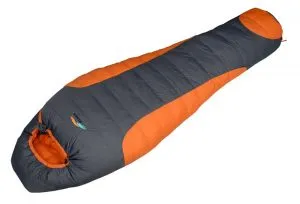
[/su_column] [/su_row]
The contoured shape of the hood and bag are designed to trap in your body heat. These bags are your best choice when you’re going to be in cool or cold environments, such as fall, winter or high altitude camping.
The downside of mummy sleeping bags is that they can feel somewhat constrictive, especially if you move around a lot during sleeping.
For women there are mummy bags cut narrower at the shoulders, wider at the hips with more insulation in the foot box and torso areas for a more comfortable sleep.
Semi mummy sleeping bags have a more generous, slightly tapered cut than a mummy bag. There is more room in the shoulders and you can move your feet and legs around a bit more. This is a good choice for someone that gets that claustrophobia feeling some people experience in the more snug fitting mummy bag.
Rectangular shaped sleeping bags are great for warm to cool weather camping. These bags offer plenty of wiggle space for legs and shoulders. Most rectangular bags don’t have built-in hoods like mummy bags do. You can find some that have fabric extending beyond the upper top of the bag for your pillow.
Although rectangular bags will let more of your body heat escape through the wider upper opening than mummy bags, this allows you to adjust how high the bag rests on your body, rather than unzipping on hot nights.
Rectangular sleeping bags are quite versatile also.
-
Unzip them to make a spare blanket.
-
Use them as a comforter, picnic or beach blanket.
-
You’ll always have extra bedding for company sleeping on the couch.
-
Keep one in your car for emergency gear.
Another benefit of rectangular sleeping bags is that you can often easily zipper two similar bags together creating one cozy bag that fits two people.
[su_divider top=“no”]
Size of the sleeping bag
There are two things to keep in mind when you think about size. The size of the sleeping bag when compressed and the size of the body going into the bag.
If you are a backpacker every ounce counts and the size when compressed will be a major factor as well.
Remember a down bag will compress to half the size of a similar synthetic bag. If you are going to be RV, cabin or walk-in camping this won’t have to be a consideration.
There are bags designed for women and people of larger frames as well. You can use this for a rough guide for overall size:
-
Up to 6 feet tall – regular length
-
Over 6 feet to 6 feet 6 inches tall – long length
-
Waistline more than 40 inches – long length
[su_divider top=“no”]
Temperature ratings
A sleeping bag’s temperature rating is an indication of the lowest temperature at which the bag will keep the average person warm. For example, a bag rated at 20°F should keep you comfy down to 20°F. But alas, no standard for measuring ratings exists for the U.S.
There is no control for variables such as clothing, metabolism, and thickness or type of sleeping pad. So manufactures rating numbers, and their real-world meaning will vary widely.
Europe has, however, developed an accurate standardized rating system called EN 13537. We can only hope the U.S. will catch on soon too.
So a U.S. temperature rating is the manufacturer’s loose estimate of the coldest temperature at which a bag will maintain your body heat, giving you a general idea of the bag’s insulation performance for the average consumer. It is not a precise measurement as different companies have different means of determining their rating.
These ratings are guidelines only as the manufactures are rather “generous” in their ratings. Know that a temperature rating on an inexpensive department store sleeping bag will tend to be a rather very optimistic rating, while a sleeping bag made by a premium company will tend to more closely correspond to the performance experienced in real life conditions.
[su_list icon=“icon: arrow-circle-right” icon_color=“#53eb21”]
- These sleeping bag ratings assume you use your sleeping bag with the appropriate tent, clothing, sleeping pad, etc. for the conditions.
- Keep in mind, the ratings are for a new sleeping bag. All sleeping bags will naturally lose their loft (thickness) and their ability to insulate over time, due to compression while the bag is packed in a small sack.
[/su_list]
If you’re a cold sleeper and usually need plenty of blankets piled on the bed at home, choose a sleeping bag that is rated for a colder temperature than you plan to sleep in on your adventures to ensure you’ll stay warm and snug as a bug.
There is nothing worse than shivering away not getting a good nights sleep on a camping trip. Remember, that your own body is warming the sleeping bag. Thus a bag that is a snug fit, not tight, will contain less air mass for your body to heat than a big roomier bag.
You can use this as a rough guide for categorizing bags by season:
-
Winter sleeping bags – around zero degrees F and lower
-
Three-season sleeping bags – around 20 degrees F
-
Summer sleeping bags – around 40 degrees F or higher
[su_divider top=“no”]
Fill and loft
Fill is the insulation in a sleeping bag. The stuffing that your body heat is going to warm up. There are many different types of insulating materials available for the best sleeping bags for the Most preferred fill is made of natural or synthetic materials.
Natural fill is goose or duck down. Down is the superior insulation for sleeping bags retaining heat better. It makes a very light bag that can be tightly compressed into a stuff sack during transport.
The drawback of down is that it must be kept dry, takes forever to dry, it may provide less insulation than no sleeping bag at all when its soaking wet, and is more expensive than synthetic materials.
You can find more technically advanced backpacking sleeping bags that have water-resistant shells to be used in damper environments.
Synthetic fill is non-allergenic, does not readily absorb water, dries quickly, and will provide some warmth even when its thoroughly soaked. If the sleeping bag accidentally gets wet on a cold day, it can still keep you relatively warm.
The resilient and firm synthetic material insulates well even underneath your body weight.
On the downside, synthetic fill cannot compress as much as down and weighs more, taking up more space with your gear. Also, synthetic insulation will tend to break down faster than a natural fill. There are many different types of synthetic fills on the market some which claim to meet the same light weight and warmth properties of a down bag.
A good way to figure out the relative warmth of a sleeping bag is to take a measurement of it’s loft. Loft refers to volume. Great volume is more trapped air, which means you’ll be warmer. The thicker the loft, the warmer the sleeping bag generally.
[su_note]
To get technical, loft is measured as volume per ounce and is a direct reflection of insulating powers. For example, down used in most technical sleeping bags will have ranges from 550 Fill Power to 750+ Fill Power.
[su_list icon=“icon: arrow-circle-right” icon_color=“#53eb21”]
- A 550 Fill Power, has insulation that occupies 550 cubic inches per ounce of down.
- A 750 Fill Power insulation occupies 200 additional cubic inches of space per ounce!
[/su_list]
Therefore, the higher the loft number the more efficient the insulation, so less is needed to fill a similar sized bag, creating the lighter overall weight of the bag. If a manufacture doesn’t specify fill power, it’s usually because the down is in the range below 400 cubic inches or it contains less than 75% down.
[/su_note]
Loft also reflects on the life expectancy of an insulation. Lower loft or fill power is susceptible to contamination earlier and may lose its functional loft sooner, which can compromise the performance of a technical sleeping bag.
It is also recommended to store your sleeping bag in a larger storage sack rather than small compression sack during unused periods of storage.
However, some hikers and backpackers say they prefer to hang their bag for storage. This method of storing a sleeping bag for a long duration is to hang the bag, and move the position of the bag on the hanger periodically so as to not create “dead spots”. A dead spot is a place where the fill gets crushed so that it is no longer useful.
[su_divider top=“no”]
Shell Material
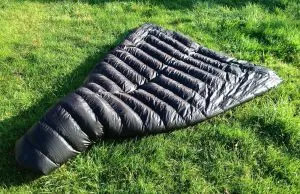
The shell material is the outer layer of a backpacking sleeping bag.
You should base your choice of a sleeping bag shell material on how you are going to use the bag. Diverse weather conditions while camping call for a water and wind resistant shell. But if you plan on three season use inside a tent, in mild weather conditions, you’ll be okay with less expensive nylon or polyester shell.
All outer sleeping bag shell fabrics have varying degrees of water and wind resistance to best fit your needs.
Keep in mind the higher the thread count of a fabric the more wind and water resistance it will offer. This will also insulate the bag better, minimizing air movement thru the fill as well as keeping the fill drier if the sleeping bag gets wet.
DWR (Durable Water Resistant) treatment coats the fabric fibers with a hydrophobic finish, causing water to bead up and roll off the fabric. The DWR treatment does not close off the tiny openings in between the fibers of the fabric, keeping the fabric breathable.
The most basic of sleeping bag shells are made of nylon or polyester, a very light, tightly woven fabric. The tight weave of these fabrics provide very breathable good wind resistance.
Polyester repels water better than nylon fabrics. However, polyester is a bit heavier than nylon. Without waterproof treatment they have very little protection in damp conditions. These are the least durable of materials used on sleeping bags good for walk-in or car camping situations, best for dry tepid conditions.
Ripstop, a very durable fabric, can be made with polyester or nylon. The heavier threads of ripstop reinforce the shell creating a stronger and slightly more moisture resistant fabric while still being very breathable. This makes an excellent choice for camping when things won’t be too damp.
Microfiber, Gossamer Micro and DryClime are also made of nylon or polyester. These lighter fabrics are very tightly woven fibers,breathable construction that is very strong and moisture resistant. Because they do not have the heavier threads of ripstop, microfiber is softer than other fabrics. Microfiber is an excellent choice for three season camping, or even winter camping if you are lucky enough and have ideal conditions and your campsite doesn’t involve a snow cave for the night.
DryLoft is a close relative to Gore-Tex. Water resistant and very breathable, which means a more comfortable stay in your bag with a DryLoft shell. DryLoft is the most wind and water resistant shell material.
The best beds for camping should allow perspiration to breathe through the bag, not get trapped inside. That means it is nice dry and toasty warm on the inside, the wet and damp cold stays on the outside. DryLoft is the premium choice for year around camping, backpacking for extended periods, or boat camping.
Gore-Tex is an excellent choice when looking for an bivy sack or over-bag for your sleeping bag when camping in extreme conditions or winter.
[su_divider top=“no”]
Other Features for best backpacking sleeping bags
Zippers
It’s going to get a lot of use during your sleeping bags lifespan so look for a quality heavy duty zipper. Many manufactures make sleeping bags that come as left zip or right zip.
Other than being able to put a left zip and a right zip bag from the same manufacturer together to make a double bag, there is no major advantage to a left versus a right zip bag. I’ve found bags from different manufactures that were compatible to zip together. Just make sure the zipper size is the same.
If you are a lefty in a right handed world, a left zip sleeping bag might be easier for you to operate in the middle of the night. Look for a bag with a 2 way zipper. This will enable you to easily ventilate the foot area if you usually stick your feet out of the bed when you feel too warm, yet you’ll be able to keep the rest of the bag zipped.
Zipper Draft Tube or Insulated Zipper
A tube of insulated fabric inside of the bag, that hangs alongside over the zipper helping trap your body warmth in while keeping drafts from coming in between the teeth of the zipper out. As well as mostly keeping that cold zipper off your skin.
Hoods and Draft Collars
50% of your body’s heat loss is through your head. A sleeping bag with a hood is a must , unless you plan to only do summer camping. There are a variety of styles for hoods. The simplest are made of the shell material and stretch around your head. Some others have adjustable drawstrings so you can cinch them up a bit or until just your face comes through.
Usually found on mummy bags and insulated like the rest of the bag is a draft collar. This feature fits around your neck and shoulders to help eliminate drafts and keep the rest of you warm. Some bags come with a chest-level adjustable draw cord or a baffle designed to retain body heat.
Some sleeping bags feature zippered pockets or flaps on the outside of the bag. Pretty handy for keeping things that are important close to you like your headlamp, eyeglasses or your watch. Keep in mind you might roll over when sleeping; so be careful with fragile items such as your eyeglasses.
Compression Sack and Storage Bag:
A compression sack is usually made of a moisture resistant, more durable material. This special compression sack allows you to squish down your sleeping bag, taking up less room in your pack. Compression sacks are very useful when backpacking out in the backcountry but are not the best way to store your bag. (See Fill and Loft). You’ll want to consider purchasing a waterproof bag for extra insurance on those canoe camping trips.
A storage bag protect your sleeping bag when you are not using it. Storage bags are usually made of a breathable material allowing you to pack your bag so that it is loose. This will help the fill of your bag maintain it’s loft.
How to choose the best sleeping bag video
https://www.youtube.com/watch?v=dsgZSOYmUZI
[su_row][su_column size=“1/2”]
Also on Snorezing.com
[su_list icon=“icon: external-link-square” icon_color=“#53eb21”]
- Best rollaway beds
- Best bunk beds with stairs
- Best Snoring Mouthpiece
- Best inflatable Beds
- Best Sleeping Bags
- Best earplugs for sleeping
[/su_list]
[/su_column] [su_column size=“1/2”]
[su_list icon=“icon: external-link-square” icon_color=“#53eb21”]
Sleeping aid Reviews
- Best anti snoring devices
- Best Bedwetting alarm reviews
- My Snoring Solution Review
- Pure Sleep Review
- Best anti snore pillow
- Zyppah Review
[/su_list]
[/su_column] [/su_row]

Patrick Mahinge
Patrick Mahinge, the chief editor at MTBNZ.org is a serial webpreneur who also enjoys mountain biking.
Related Articles

10-07-2016
Kelty sleeping bags reviews: Find The Best Deals on Kelty Sleeping Bags
Read more about this article...
Read more →